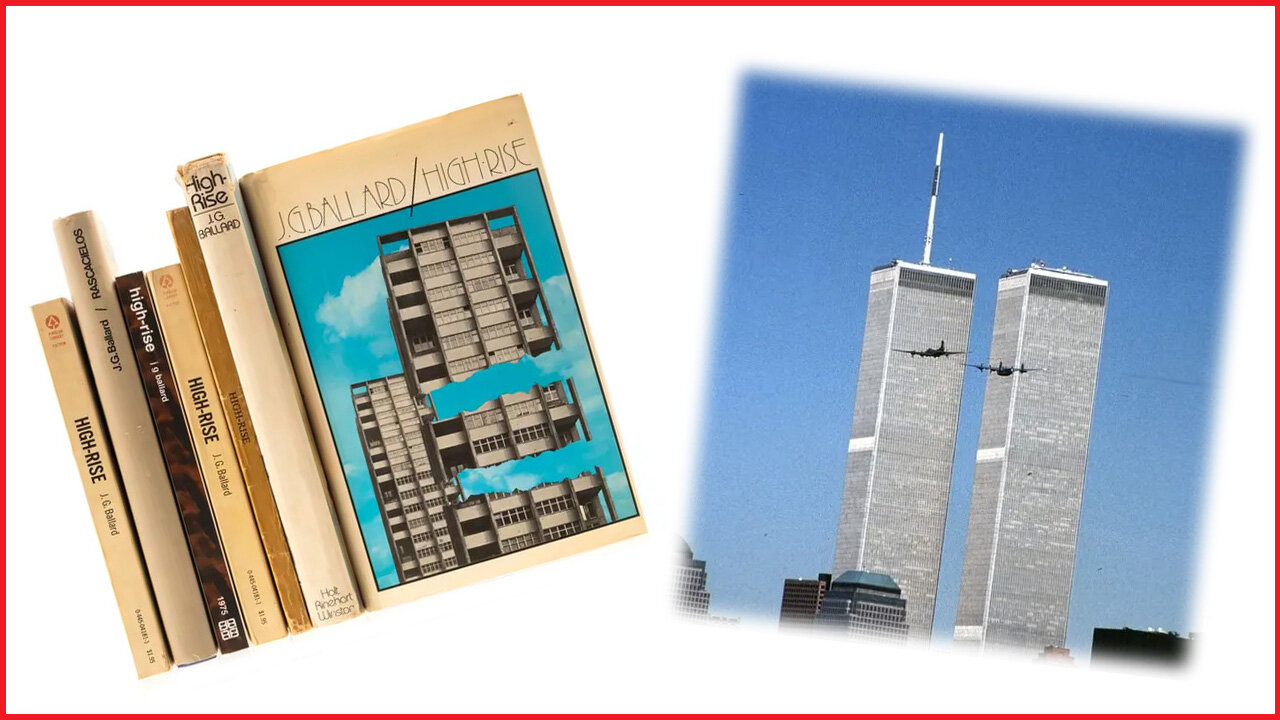Premium Only Content

'High-Rise' (1975) by J. G. Ballard
J. G. Ballard’s 'High-Rise' (1975) stands as one of the author’s most chilling and incisive visions of modern civilization collapsing under the weight of its own supposed progress. A dystopian allegory wrapped in psychological realism, the novel examines what happens when the fragile veneer of social order erodes within a luxury apartment tower—a microcosm of late capitalist society. Through its meticulously detached prose and escalating brutality, 'High-Rise' transforms an architectural setting into a symbolic arena where civilization itself devours its inhabitants.
Setting and Structure: Civilization in a Vertical Cage: The high-rise in Ballard’s novel is a forty-storey concrete monolith on the outskirts of London, offering every convenience a modern professional might desire: supermarkets, schools, swimming pools, even a bank. Its residents, mostly affluent professionals, are stratified by floor, with the wealthiest and most powerful occupying the upper levels. From the outset, the building’s structure mirrors a rigid class hierarchy, suggesting that Ballard’s tower is not merely a setting but a social experiment—or perhaps a trap.
The physical isolation of the building, designed to be self-sufficient, ensures that once things begin to deteriorate, there is no escape. Ballard’s description of the high-rise as “a huge animate organism” evokes both fascination and horror. The architecture becomes a character in its own right, absorbing the human impulses it contains and feeding back the chaos it breeds. The result is a closed ecosystem of violence, status anxiety, and moral entropy.
Themes: Dehumanization and Regression: At its heart, 'High-Rise' explores the collapse of social order and the thinness of civilization’s moral fabric. Ballard’s central thesis—echoing the ideas of Freud’s Civilization and Its Discontents—is that modernity suppresses primal instincts only temporarily. Once the environment ceases to enforce norms, humanity regresses to tribalism and violence. The residents of the high-rise quickly divide into factions based on floor levels, waging guerrilla warfare over territory and resources. Elevators are sabotaged, garbage piles up, and pets are slaughtered for food. Yet the most disturbing aspect is not the savagery itself but how swiftly and willingly the tenants embrace it.
Ballard’s characters seem almost relieved by the collapse of order. The protagonist, Dr. Robert Laing—a clinical observer rather than a hero—feels a growing exhilaration as society unravels. Similarly, Anthony Royal, the architect who designed the building, views the chaos as a kind of perverse fulfillment of his vision. Their psychological detachment reflects Ballard’s fascination with the idea that humans may secretly crave breakdowns of order as opportunities for rebirth or liberation from conformity.
-
 2:07:06
2:07:06
Side Scrollers Podcast
1 day agoDiaper Furry Streamer Gets ONLY ONE DAY Suspension + Hasan PLAYS VICTIM + More | Side Scrollers
26.3K17 -
 56:38
56:38
DeProgramShow
1 day agoDeprogram with Ted Rall and John Kiriakou: "Jake Tapper on the Global Hunt for an Al Qaeda Killer”
2.02K3 -
 1:43:07
1:43:07
The Michelle Moore Show
2 days ago'The 12 Open Doors' Guest, Steve Jarvis: The Michelle Moore Show (Oct 17, 2025)
9.72K10 -
 LIVE
LIVE
Lofi Girl
3 years agolofi hip hop radio 📚 - beats to relax/study to
88 watching -
 1:45:06
1:45:06
Badlands Media
22 hours agoDevolution Power Hour Ep. 399: No Kings, Antifa’s Collapse & Trump’s Year of Peace
271K81 -
 2:56:00
2:56:00
Laura Loomer
9 hours agoEP150: New Yorkers Brace For Islamic Takeover After Mayoral Election Debate
78.4K94 -
 1:35:37
1:35:37
Man in America
13 hours agoThe Forbidden Medicine of Light: Why is Big Pharma HIDING This From Us?
56.4K21 -
 2:35:13
2:35:13
BlackDiamondGunsandGear
6 hours agoAFTER HOURS ARMORY / BUILDING GUNS ARE ILLEGAL? / Marine Gun Builder RETURNS!!
19.6K3 -
 2:05:19
2:05:19
Damysus Gaming
7 hours agoARC Raiders - SERVER SLAM TIME!!!! LFG!!!
34.4K2 -
 1:04:10
1:04:10
The Connect: With Johnny Mitchell
10 hours ago $6.06 earnedTucker Carlson's INSANE Take On Civil War In America, Calls For Fascism
25.1K52